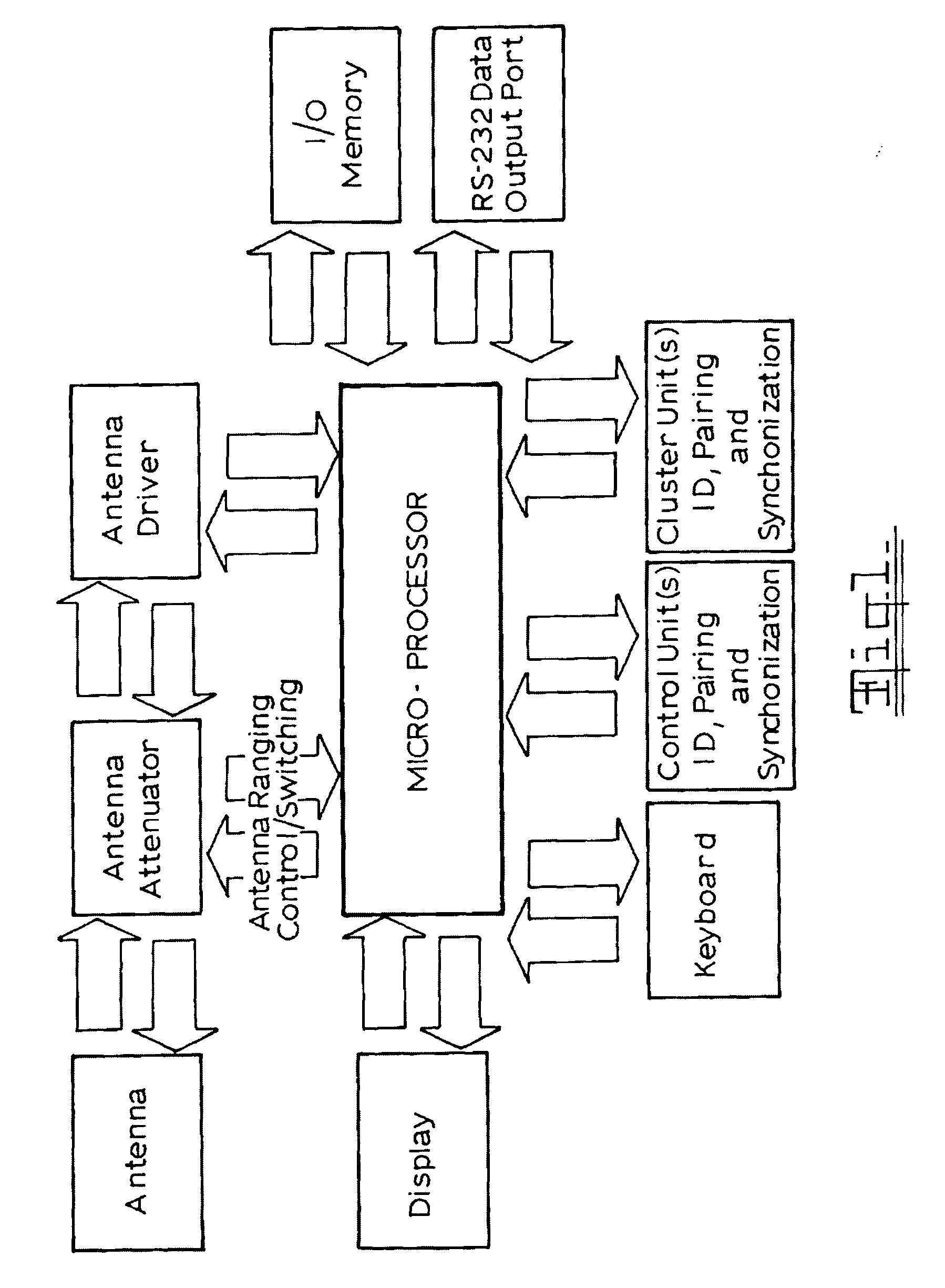Portal access control system
a technology for controlling access and control systems, applied in transmission systems, alarms, transmissions, etc., can solve the problems of inability to determine the position of cars or persons in queues, inability to determine the intent of users, and inability to distinguish order in queues, etc., to achieve easy differentiation of order in queues, enhance and simplify security
- Summary
- Abstract
- Description
- Claims
- Application Information
AI Technical Summary
Benefits of technology
Problems solved by technology
Method used
Image
Examples
Embodiment Construction
[0170]A number of embodiments of the invention will be described with reference to the drawings in which:
[0171]FIG. 1 illustrates a block diagram of the major components of the Control Unit;
[0172]FIG. 2 illustrates a block diagram of the major components of the Condition unit;
[0173]FIG. 3 illustrates an even (normal) pattern of communication between two antennas and their transmitting (Tx) and reception (Rx) fields.
[0174]FIG. 4 illustrates an uneven radiation pattern where the transmitting field radiates with much less power than the receptive field. The antennas illustrated will not communicate properly.
[0175]FIG. 5 illustrates the position where the uneven radiation pattern fields of antennas of FIG. 4 will communicate.
[0176]FIG. 6 illustrates the Rf radiation field patterns of the Control Unit with unattenuated radiation patterns and a Condition unit placed in a vehicle approaching a garage with unattenuated radiation patterns;
[0177]FIG. 7 illustrates the Rf radiation field patte...
PUM
 Login to View More
Login to View More Abstract
Description
Claims
Application Information
 Login to View More
Login to View More - R&D
- Intellectual Property
- Life Sciences
- Materials
- Tech Scout
- Unparalleled Data Quality
- Higher Quality Content
- 60% Fewer Hallucinations
Browse by: Latest US Patents, China's latest patents, Technical Efficacy Thesaurus, Application Domain, Technology Topic, Popular Technical Reports.
© 2025 PatSnap. All rights reserved.Legal|Privacy policy|Modern Slavery Act Transparency Statement|Sitemap|About US| Contact US: help@patsnap.com



